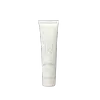What's inside
What's inside
 Key Ingredients
Key Ingredients

 Benefits
Benefits

 Concerns
Concerns

 Ingredients Side-by-side
Ingredients Side-by-side

Water
Skin ConditioningPropylene Glycol
HumectantDicaprylyl Ether
EmollientGlycerin
HumectantPEG-100 Stearate
Glyceryl Stearate
EmollientSqualene
EmollientHydrogenated Polyisobutene
EmollientPhenoxyethanol
PreservativeSorbitan Oleate
EmulsifyingCaprylyl Glycol
EmollientAcrylates/C10-30 Alkyl Acrylate Crosspolymer
Emulsion StabilisingTriethanolamine
BufferingBeeswax
Emulsion StabilisingTocopherol
AntioxidantDisodium EDTA
Stearic Acid
CleansingMyristyl Alcohol
EmollientPrunus Amygdalus Dulcis Oil
Skin ConditioningPrunus Armeniaca Kernel Oil
MaskingElaeis Guineensis Kernel Oil
EmollientPersea Gratissima Oil
Skin ConditioningWater, Propylene Glycol, Dicaprylyl Ether, Glycerin, PEG-100 Stearate, Glyceryl Stearate, Squalene, Hydrogenated Polyisobutene, Phenoxyethanol, Sorbitan Oleate, Caprylyl Glycol, Acrylates/C10-30 Alkyl Acrylate Crosspolymer, Triethanolamine, Beeswax, Tocopherol, Disodium EDTA, Stearic Acid, Myristyl Alcohol, Prunus Amygdalus Dulcis Oil, Prunus Armeniaca Kernel Oil, Elaeis Guineensis Kernel Oil, Persea Gratissima Oil
Water
Skin ConditioningGlycerin
HumectantSqualane
EmollientCaprylic/Capric Triglyceride
MaskingCoconut Alkanes
EmollientGlyceryl Stearate
EmollientMeadowfoam Estolide
Skin ConditioningPEG-100 Stearate
Cetearyl Alcohol
EmollientC12-15 Alkyl Benzoate
AntimicrobialPhytosteryl Macadamiate
Skin ConditioningTriheptanoin
Skin ConditioningCoco-Caprylate/Caprate
EmollientMethylpropanediol
SolventLinoleic Acid
CleansingPhospholipids
Skin ConditioningPhytosterols
Skin ConditioningSodium Polyacrylate
AbsorbentTribehenin
EmollientCaprylyl Glycol
EmollientPhenoxyethanol
PreservativeDipalmitoyl Hydroxyproline
Skin ConditioningSodium PCA
HumectantUrea
BufferingDilinoleic Acid/Butanediol Copolymer
Hydroxyproline Palmitamide
Skin ConditioningHydroxyethyl Acrylate/Sodium Acryloyldimethyl Taurate Copolymer
Emulsion StabilisingIsohexadecane
EmollientCeramide Ng
Skin ConditioningTrehalose
HumectantSodium Phytate
PEG-10 Phytosterol
EmulsifyingHexylene Glycol
EmulsifyingPolysorbate 60
EmulsifyingPalmitic Acid
EmollientLactic Acid
BufferingPolyquaternium-51
Skin ConditioningTocopherol
AntioxidantTriacetin
AntimicrobialCastor Oil/Ipdi Copolymer
Sorbitan Isostearate
EmulsifyingSodium Hyaluronate
HumectantPalmitoyl Hexapeptide-12
Skin ConditioningWater, Glycerin, Squalane, Caprylic/Capric Triglyceride, Coconut Alkanes, Glyceryl Stearate, Meadowfoam Estolide, PEG-100 Stearate, Cetearyl Alcohol, C12-15 Alkyl Benzoate, Phytosteryl Macadamiate, Triheptanoin, Coco-Caprylate/Caprate, Methylpropanediol, Linoleic Acid, Phospholipids, Phytosterols, Sodium Polyacrylate, Tribehenin, Caprylyl Glycol, Phenoxyethanol, Dipalmitoyl Hydroxyproline, Sodium PCA, Urea, Dilinoleic Acid/Butanediol Copolymer, Hydroxyproline Palmitamide, Hydroxyethyl Acrylate/Sodium Acryloyldimethyl Taurate Copolymer, Isohexadecane, Ceramide Ng, Trehalose, Sodium Phytate, PEG-10 Phytosterol, Hexylene Glycol, Polysorbate 60, Palmitic Acid, Lactic Acid, Polyquaternium-51, Tocopherol, Triacetin, Castor Oil/Ipdi Copolymer, Sorbitan Isostearate, Sodium Hyaluronate, Palmitoyl Hexapeptide-12
 Reviews
Reviews

Ingredients Explained
These ingredients are found in both products.
Ingredients higher up in an ingredient list are typically present in a larger amount.
Caprylyl Glycol is a humectant and emollient, meaning it attracts and preserves moisture.
It is a common ingredient in many products, especially those designed to hydrate skin. The primary benefits are retaining moisture, skin softening, and promoting a healthy skin barrier.
Though Caprylyl Glycol is an alcohol derived from fatty acids, it is not the kind that can dry out skin.
This ingredient is also used as a preservative to extend the life of products. It has slight antimicrobial properties.
Learn more about Caprylyl GlycolGlycerin is already naturally found in your skin. It helps moisturize and protect your skin.
A study from 2016 found glycerin to be more effective as a humectant than AHAs and hyaluronic acid.
As a humectant, it helps the skin stay hydrated by pulling moisture to your skin. The low molecular weight of glycerin allows it to pull moisture into the deeper layers of your skin.
Hydrated skin improves your skin barrier; Your skin barrier helps protect against irritants and bacteria.
Glycerin has also been found to have antimicrobial and antiviral properties. Due to these properties, glycerin is often used in wound and burn treatments.
In cosmetics, glycerin is usually derived from plants such as soybean or palm. However, it can also be sourced from animals, such as tallow or animal fat.
This ingredient is organic, colorless, odorless, and non-toxic.
Glycerin is the name for this ingredient in American English. British English uses Glycerol/Glycerine.
Learn more about GlycerinGlyceryl Stearate is a mix of glycerin and stearic acid.
It is used to stabilize the mixing of water and oil ingredients. By preventing these ingredients from separating, it can help elongate shelf life. It can also help thicken the product's texture.
As an emollient, it helps soften skin and supports barrier-replenishing ingredients.
In cosmetics, Glyceryl Stearate is often made from vegetable oils or synthetically produced.
This ingredient may not be fungal-acne safe
Fun fact: The human body also creates Glyceryl Stearate naturally.
Learn more about Glyceryl StearatePeg-100 Stearate is an emollient and emulsifier. As an emollient, it helps keep skin soft by trapping moisture in. On the other hand, emulsifiers help prevent oil and water from separating in a product.
PEGS are a hydrophilic polyether compound . There are 100 ethylene oxide monomers in Peg-100 Stearate. Peg-100 Stearate is polyethylene glycol ester of stearic acid.
Phenoxyethanol is a preservative that has germicide, antimicrobial, and aromatic properties. Studies show that phenoxyethanol can prevent microbial growth. By itself, it has a scent that is similar to that of a rose.
It's often used in formulations along with Caprylyl Glycol to preserve the shelf life of products.
Tocopherol (also known as Vitamin E) is a common antioxidant used to help protect the skin from free-radicals and strengthen the skin barrier. It's also fat soluble - this means our skin is great at absorbing it.
Vitamin E also helps keep your natural skin lipids healthy. Your lipid skin barrier naturally consists of lipids, ceramides, and fatty acids. Vitamin E offers extra protection for your skin’s lipid barrier, keeping your skin healthy and nourished.
Another benefit is a bit of UV protection. Vitamin E helps reduce the damage caused by UVB rays. (It should not replace your sunscreen). Combining it with Vitamin C can decrease sunburned cells and hyperpigmentation after UV exposure.
You might have noticed Vitamin E + C often paired together. This is because it is great at stabilizing Vitamin C. Using the two together helps increase the effectiveness of both ingredients.
There are often claims that Vitamin E can reduce/prevent scarring, but these claims haven't been confirmed by scientific research.
Learn more about TocopherolWater. It's the most common cosmetic ingredient of all. You'll usually see it at the top of ingredient lists, meaning that it makes up the largest part of the product.
So why is it so popular? Water most often acts as a solvent - this means that it helps dissolve other ingredients into the formulation.
You'll also recognize water as that liquid we all need to stay alive. If you see this, drink a glass of water. Stay hydrated!
Learn more about Water